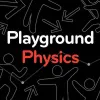
Digital Citizenship Week is October 20–24!
Join teachers worldwide to promote a healthy, positive approach to media and tech.
Take a look inside 5 images
Playground Physics
Pros: Gets kids moving their bodies to explore science; the interface is ridiculously easy to use, and there are tons of available resources and lesson plans.
Cons: Motion tracks have to be built by hand, so it's not as magical as specialized data-logging hardware. Generated graphs can't easily be exported.
Bottom Line: This is a cheap way to get students out of their chairs to make physics real and tangible, empowering learners and encouraging curiosity.
Playground Physics is appropriate across the entire age spectrum of the science curriculum. The youngest students (as early as kindergarten) can have fun tracing motion and watching the paths follow their videos, while older students can work out the calculus to determine equations representing velocity, acceleration, and force.
The app can really fit into any science unit on motion. It can be an intro activity before diving into a more traditional treatment of the content, or it can be a complete project. Encourage students to direct and film a video showing a variety of physical relationships, then use the app's features to measure them and add relevant special effects. It's always great to keep around for students to explore during spare time between units or during test-related downtime.
Playground Physics is part of the New York Hall of Science's (NYSCI) "Noticing Tools" suite of apps. Students use the iPad to shoot video of any motion they'd like, whether it's their friends running around or playing on playground equipment, tennis balls flying across the room, or more controlled lab experiments. After tagging key frames in the video to create motion tracks and adjusting the scale for accurate measurements, the program then measures speed, position, direction, energy, and force. These measurements are displayed with meters and time-coded graphs along with the video.
Students can then apply their knowledge of velocity, force, and energy to add special effects to the video and stickers to the timeline. These can represent points of high or low speed, push or pull forces, and high kinetic or potential energy. Videos can then be saved and shared through any of the iPad's sharing routes, Google Drive, or the app's Teacher Hub feature.
It's great for learning. Any time you can get students moving their bodies to authentically teach concepts, they learn on a deep, intuitive level that transfers to skills outside the classroom. The learning can be very student-led: They choose how to move, how to film, how exact to be in their motion-tracking, and when to mark the timeline to represent physical concepts.
At some point, you'll have to work to translate everything to paper with formulas and word problems, but the app's ability to share videos makes that easy, too. Students can include their own creations in presentations that also include the written physics.














